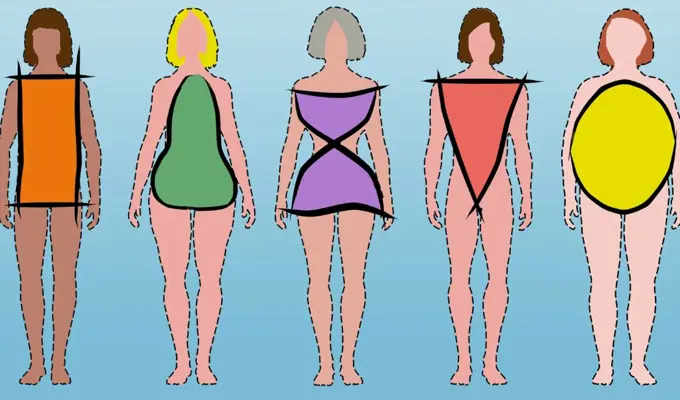Curious if your waistline is in the “healthy” zone? Our Waist-to-Hip Ratio Calculator makes it simple. Grab a tape measure, enter your numbers, and instantly see how your waist-to-hip ratio compares. This quick check often reveals more about your health than BMI, as it highlights how fat is stored around your body rather than just how much you weigh. Using an accurate measure of body fat distribution, like the waist-to-hip ratio, is crucial for predicting health outcomes and assessing your risk for conditions such as cardiovascular disease.
And remember — numbers mean nothing without action. Claim your FREE PASS at GymNation and start lowering your ratio with world-class equipment and trainers. For a full assessment of your health risks, always consult a healthcare professional.
SIGN UP FOR YOUR FREE DAY PASS TODAY!
What is the Waist-to-Hip Ratio?
The waist-to-hip ratio (WHR) is a simple but powerful health indicator. Unlike body mass index (BMI), which only considers height and weight, WHR focuses on body composition by showing where body fat is stored and highlighting body fat distribution.
-
Waist measurement: measure your waist circumference at the narrowest point above the belly button.
-
Hip measurement: measure your hip circumference at the widest portion of your hips (hip measurements).
-
Formula: WHR = Waist circumference divided by Hip circumference (waist divided by hip)
Example: Waist 75 cm ÷ Hips 95 cm = 0.79 WHR
Accurate WHR measurements are important for assessing health. A higher WHR usually means more fat stored around the abdomen, often referred to as abdominal obesity. Carrying excess fat in this area is closely linked to greater risks of chronic conditions such as heart disease, type 2 diabetes, and metabolic syndrome.
Want more detail? See our dedicated guides for Waist-to-Hip Ratio for Men and Waist-to-Hip Ratio for Women to understand how risks and goals differ by sex.
Waist to Hip Ratio Calculator
How to Use the Calculator (Step-by-Step)
Accurate waist and hip measurements are essential for reliable results. Use a stretch resistant tape and ensure the tape is held parallel to the floor for all measurements.
-
Measure your waist in centimetres at the narrowest part of your torso — usually just above your belly button. Keep the tape snug but not tight, and make sure it’s held level around your body.
-
Measure your hips in cm at the widest portion of the hips (the broadest part of the buttocks), again keeping the tape parallel to the floor.
-
Enter the numbers into the calculator.
-
Get your WHR instantly.
GymNation Tip: Always measure in the same way (same tape, similar clothing, same time of day) for consistency. Following a standardised data gathering protocol and considering body weight distribution can improve the accuracy of your waist and hip measurements. Tracking trends every few months is far more useful than checking daily.
Why the Waist-to-Hip Ratio Matters
WHR isn’t about looks — it’s about health. A higher waist-to-hip ratio is strongly linked to increased risk of serious health problems such as heart disease, type 2 diabetes, and other chronic conditions. A lower ratio generally indicates less belly fat and a reduced risk of illness, while a higher ratio suggests more abdominal fat — the type most closely associated with greater health risks.
According to the World Health Organisation (WHO):
-
Men: WHR above 0.90 = increased health risk
-
Women: WHR above 0.85 = increased health risk
Those with WHR values between the low and high thresholds fall into a moderate risk category for developing health concerns. Put simply: BMI shows how much you weigh. WHR shows where you carry it - and that difference matters for your long-term health.
GymNation tip: Abs might be made in the kitchen, but your waist-to-hip ratio is built on consistent training.
Ideal & Average Waist-to-Hip Ratios
There’s no single “perfect body,” but guidelines can help:
-
Men: 0.85 or lower = low risk
-
Women: 0.75 or lower = low risk
-
Women at 0.7: often cited as both healthy and, in studies, the “most attractive” ratio
On average, modern lifestyles push WHR slightly higher, especially for “apple-shaped” bodies that carry more weight around the waist. In contrast, “pear-shaped” bodies, with more weight stored on the hips and thighs, are generally linked to lower health risks. A high waist-to-hip ratio has also been linked to premature death from conditions like heart disease and diabetes.
These figures are benchmarks, not verdicts. Use them to track progress, not as a measure of self-worth. Waist-to-hip ratio is considered a better indicator of overall health than BMI alone.
Lifestyle Tips to Improve Your Ratio
Improving your WHR is about long-term health, not chasing perfection.
-
Exercise: A mix of cardio and strength training reduces belly fat and builds lean muscle.
-
Nutrition: Focus on whole foods, lean protein, and fibre. Cut back on processed foods and added sugar. Healthy eating habits support weight loss, which can help lower your waist-to-hip ratio.
-
Sleep & stress: Poor sleep and high stress hormones (like cortisol) make belly fat harder to lose.
-
Consistency: Progress takes time — steady habits matter more than quick fixes.
GymNation tip: You don’t need to train like an Olympian, but you do need to show up consistently.
OTHER FITNESS CALCULATORS
FAQs About Waist-to-Hip Ratio
What is a good waist-to-hip ratio?
For men, 0.9 or lower. For women, 0.85 or lower.
What is the most attractive waist-to-hip ratio?
Studies often suggest 0.7 for women and around 0.9 for men, but health matters more than appearance.
What is a 0.7 waist-to-hip ratio?
It usually indicates low belly fat and a healthy fat distribution for women.
How do you calculate waist-to-hip ratio?
Divide your waist measurement by your hip measurement (waist ÷ hip).
Which waist-to-hip ratio is curvy?
For women, around 0.7 is commonly associated with a curvy shape.
What is the waist-to-hip ratio for belly fat?
Ratios above 0.9 for men and 0.85 for women suggest abdominal fat and higher health risks. A high WHR is also associated with increased risk of chronic diseases such as Alzheimer's disease.
Is 0.75 waist-to-hip ratio attractive?
Yes, it’s within the healthy range and often considered attractive in studies.
Can diet affect my waist-to-hip ratio?
Yes. Healthy eating habits and fat loss can lower WHR.
Is a smaller waist-to-hip ratio better?
Generally, yes for health, but extremely low values may indicate malnutrition or other concerns.
What waist-to-hip ratio do guys like?
Research often points to ~0.7 in women, but personal preference varies.
Is a lower WHR always better?
No. Going too low can signal health issues, but a high WHR can indicate increased health risks.
What is the ideal hip size for a woman?
There’s no single ideal — it’s about proportion between waist and hips.
What should my waist be for my height?
A simple check: aim for a waist less than half your height
Is 0.68 a good waist-to-hip ratio?
Yes, it’s healthy and below the average risk threshold.
What is the correct BMI for my age?
BMI doesn’t change with age, but WHR may give a clearer health picture.

































































































